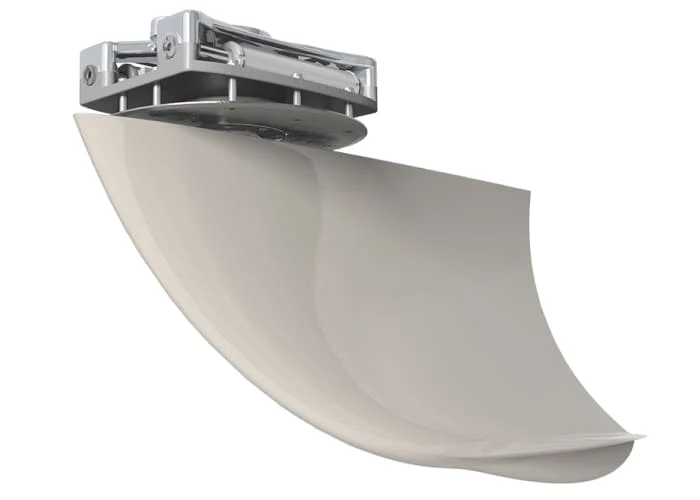Sleipner
In recent years, stabilization of lateral rolling, natural for any vessel at sea, has become a mandatory item on board, due to the impressive increase in comfort it provides. The drastic reduction in rolling that modern systems offer also increases safety on board and, as a result, allows many families to better enjoy their time on board.
Fin stabilizers act in the water and have two ways of creating rolling reduction force, depending on the speed of the boat. At zero speed or in "anchored" mode, the fins rotate quickly (flap) to generate force and, like gyro stabilizers, have a defined limit and stop when they reach the end of their travel.
However, when the boat is moving forward, the fins also generate rolling reduction forces by the angle at which they pass through the water, like adjustable airplane wings or underwater blades. This force increases with the square of the speed, so the faster the boat moves, the more force it generates. Crucially, they can maintain this force as long as the boat keeps moving forward.
Another advantage of Sleipner stabilizers is that their parts do not occupy useful areas, as they are installed in various locations on the boat, with 95% being in the engine room or below the vessel's floor (bilge, panel rooms, etc.). Their installation is much faster and much simpler on vessels that are ready and being refurbished.
Talk to an expert

